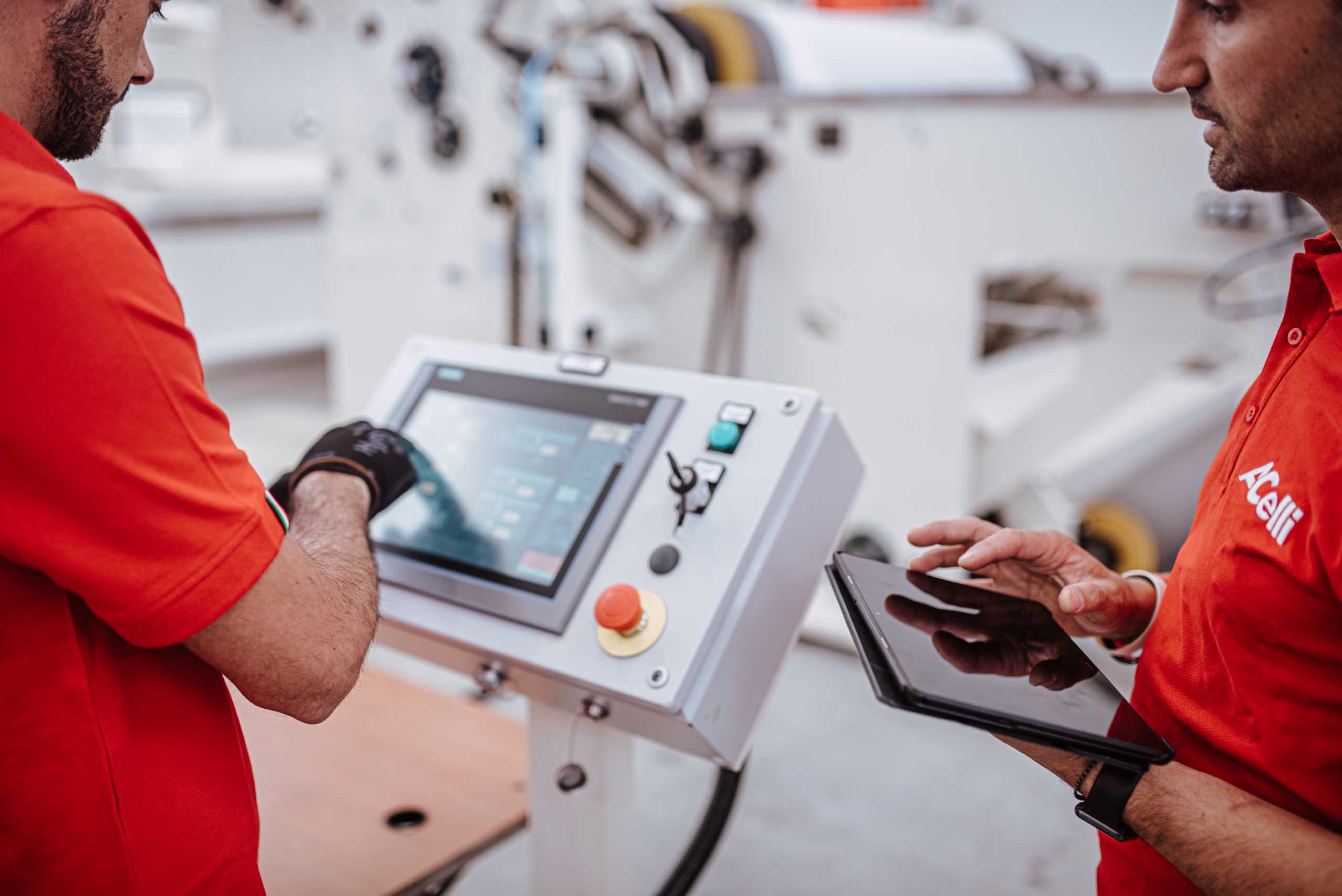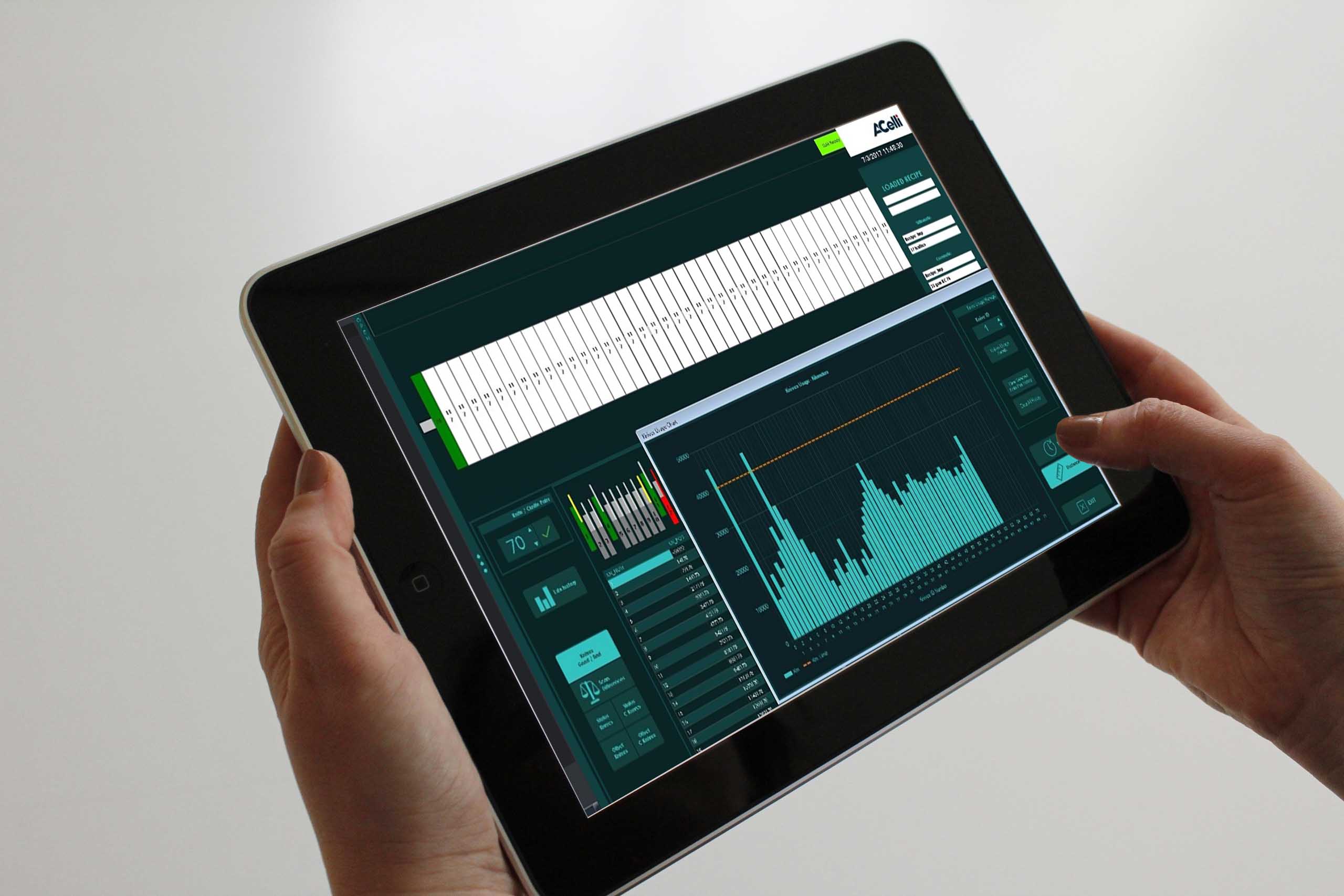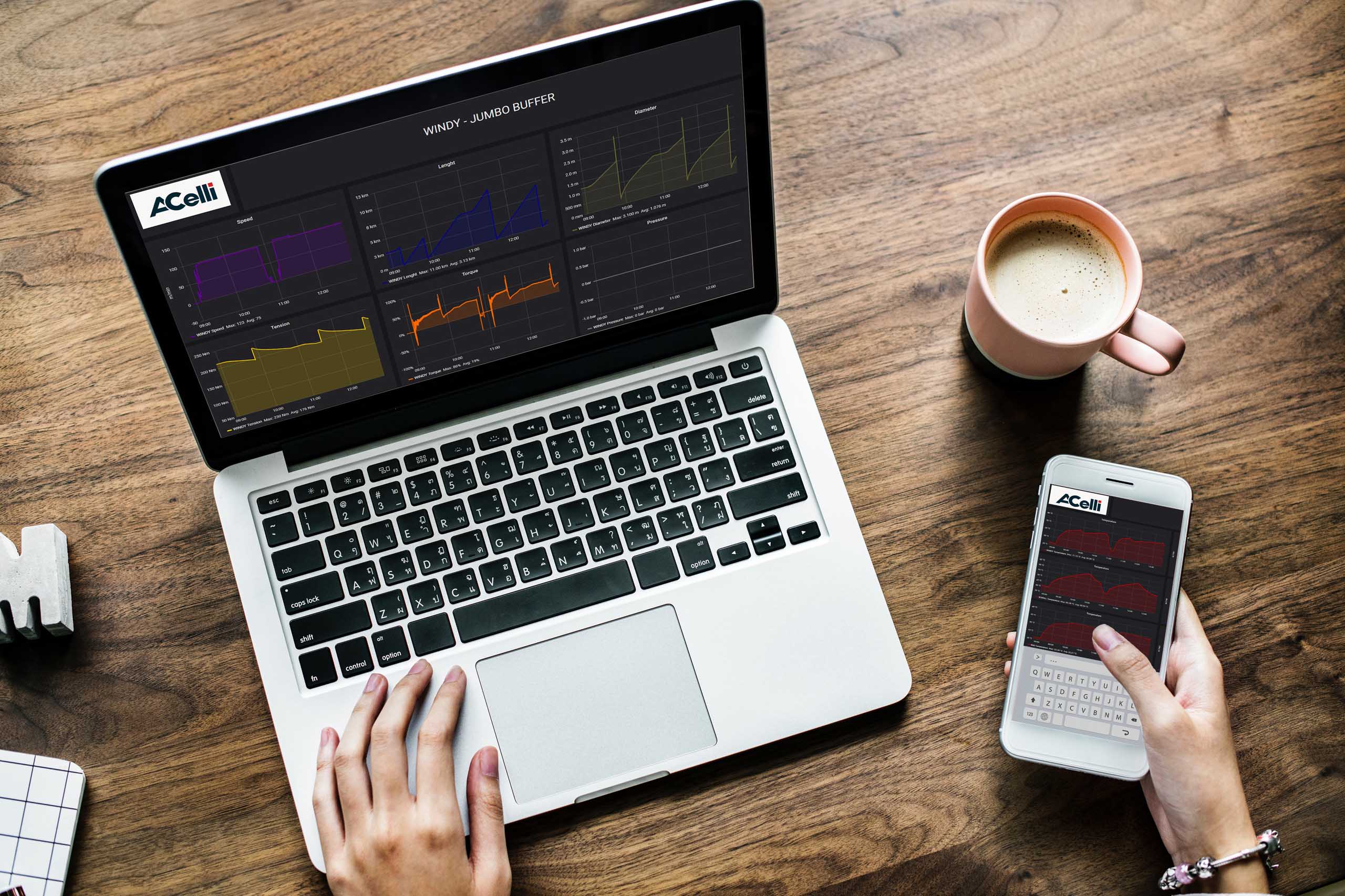
The Company
Topics
Contacts

digital solutions

Industry 4.0 is a subset of the fourth Industrial Revolution, which is one of a number of technological revolutions that has happened over the past 400 years. To understand it, it’s important to understand first the evolution of the Industrial Revolution:
Industry 4.0 applies specifically to factories and their operations. With Industry 4.0, factory machines are connected wirelessly using sensors that allows the system as a whole to “see” the entire factory production line, monitor it, and make decisions based on the data collected.

Included under the Industry 4.0 umbrella are smart manufacturing, the smart factory, the Industrial Internet of Things (IIoT), and lights-out manufacturing. These all require numerous technologies to run efficiently and effectively. With that in mind, what follows are the primary Industry 4.0 technologies.
With cloud computing now firmly established as the primary platform for software and systems and the main location of data storage, it has become a must-have for Industry 4.0. Thanks to the cloud, factories no longer have to maintain on-premise IT equipment or departments. Instead, everything can be stored offsite.
This allows for ease of flexibility and scalability as the business grows and the amount of data collection, storage, and management increases. It also allows factories to take advantage of IIoT, since all machinery and equipment can communicate with each other via the cloud.
Read more: Cloud Computing and Integration with Machine and Corporate Applications
Big Data is a term that has been thrown around for a number of years now. What it means is simple – the collection of data in real-time from many different data points, from both traditional and digital sources. The data from all data points can be analysed independently or in relation to any or all of the other data points, providing a snapshot of aspects of a specific system or an overall portrait of how the operations are working.
In particular, as more and more data are shared across company sites and with stakeholders inside and outside the company, smooth and near-instantaneous communications and data transfer will make overall operations smoother.
Read more: How to set up data driven production processes in tissue & nonwovens industries
With big data comes the need for efficient data management. Since there is data coming from many different sources, both inside and outside the factory, the integration of these data is the key. There must be:
With this data integration, the goal is to reach a level of self-optimization within the factory.
Read more: How to manage data governance in an Industry 4.0 system
As the equipment in factories becomes computerized and sensors are installed, the entire production process can be automated from start to finish. Equipment and machinery will communicate with each other, collect and analyse data, monitor and track production and machine functionality, and self-optimize processes for optimal performance. This includes the work of hundreds or even thousands of sensors constantly monitoring every aspect of operations, such as the movement of transport belts to the energy consumption of each piece of equipment.
In order to make data collection and analysis run smoothly for the greatest benefit of operations, software must be able to perform complete system integration and allow for the interaction between humans and machines. Middleware and open source software are used for this. Smart factories are in need of middleware to ensure smooth communication between the operating system/database and the applications workers use to monitor and take appropriate action.
While factories can purchase middleware that will enable the interaction between machine and human, open source software allows the same capability for free and with a greater degree of standardization and interoperability. In light of this, the adoption of open source software is growing at a phenomenal rate, particularly when it comes to machine learning and analytics.
Machine learning is a form of artificial intelligence in which a piece of machinery or equipment can analyse data and make predictions based on previous patterns and experience. This machine learning can be supervised, meaning the machine is provided with specific input and output variables and learns based on those, or it can be unsupervised, meaning the machine is only given input variables.
Unsupervised machine learning is beneficial in that it allows for the collection of random operations data, making it possible to learn more from the data than it would be if the data were controlled. In contrast, supervised learning makes the use of algorithms possible when analysing data, which is important since data are constantly flowing in from thousands of sensors.
Algorithms allow the machinery to be programmed with specific variables that represent the current production context, which is dependent on what is being manufactured and how it is being manufactured. In this way, the data can be analysed based on relevant factors, such as machine settings and production flow. One commonly used algorithm is the Random Forest algorithm, which takes randomly selects data points to come up with the rules by which operations should be run.
When it comes to data collection and analysis, Deep Learning neural networks are used specifically to gather data and detect anomalies and errors in real-time. This allows machines to catch system errors and machine wear and malfunction, ensuring the safety and smooth operation of the factory and minimizing overall downtime.

The above technologies allow factories to address key areas of interest in their overall operations, ensuring high production quality with high efficiency and minimal waste. This results in happy customers and an improved bottom line. The following are the primary areas of interest served by Industry 4.0 technology.
Quality has always been a concern in manufacturing. In the past, quality control was done manually, with humans checking the product as it came off the production line. With the technology of Industry 4.0, quality management can be more thorough and more cost efficient thanks to improved data quality and information sharing. The improvement to quality management can be directly attributed to an improvement in process control.
With Industry 4.0 technology, which connects all machinery, equipment and devices together in a complete neural network, anomalies and defects can be detected in real-time anywhere along the production line. This detection occurs locally, and the data can be received remotely. This allows for enhanced multivariate statistical analysis process control, a popular form of advanced process control, as immediate and automated adjustments are made to the relevant area of the production line.
Read more: How to measure tissue and nonwovens mill machinery performance with real time analytics
With the horizontal collection of data across the manufacturing industry, we no longer need to rely on historical demand to determine supply needs. With the amount of real-time data collected, current demand can be more accurately forecasted, and supply can be adjusted based on that forecast. Not only this, but product design and configuration can be adjusted to meet demand as that demand manifests.
The faster a product can be produced, the faster it can get out to the customer and generate revenue. With Industry 4.0 technology, factories can use virtual modelling to run rapid simulations of what a product will look like and how it will function. This can be done in the early phases of product planning and production, allowing for increased product performance and decreased time-to-market. In addition, 3D printing can help test a product prior to full production.
This new technology also makes it possible for customers to co-design their own products. Customers can work with a team of specialists to ensure the product is custom designed to their specifications, then production can commence. This makes production incredibly adaptable to customer and region and decreases time-to-market.
This ability to have customers co-design a product is just the beginning of the customer service and satisfaction manufacturers can deliver with Industry 4.0 technology. Connection with customers can be a 24/7 experience, regardless of where they are in the world. This makes it possible for manufacturers to offer customers a virtual marketplace and to connect with them via chatbots.
Beyond this, manufacturers can set up augmented reality-guided spare shops, allowing them to use 3D printing technology to quickly and easily create spare parts for customers. This technology will also help manufacturers to constantly monitor their customers’ products and conduct remote predictive maintenance on a regular basis. They will be able to see a problem when it does arise and take the necessary steps to resolve it remotely.
Read more: 3 Advantages of Predictive Maintenance in the Tissue and Nonwovens Industry
Industry 4.0 technology significantly improves processes within a factory, offering multiple positive outcomes, such as:
This can all be accomplished with the introduction of IoT, Smart Energy management, and real-time and data-driven yield optimization.
The need to oversee and manage assets is a significant aspect of factory production. Industry 4.0 technology allows for remote monitoring and control of machines and equipment via sensors so predictive maintenance can be performed. This ensures that machine downtime is kept to a minimum, increasing machine flexibility and ensuring maintenance, repair, and operations all continue to run smoothly and efficiently.
Read more: Data as an Asset: iREEL and intelligent collaboration between production and converting lines
Labour productivity is critical in any industry. With Industry 4.0 technology, labour productivity can easily be increased by reducing wait times and increasing workers overall operational speed. This is attained by using technology that facilitates human-machine interaction and collaboration. With the ability to monitor and control machinery remotely, the workforce can do their job, even when they aren’t onsite.
When it comes to communication with and management of the workforce, device monitoring can be used to assess productivity and chatbots can ensure communication 24/7. This keeps communication open on a global scale and digital performance management can be ongoing.
Read more: Chatbots and Augmented Reality are the future (present) of industrial maintenance
No company wants to have too much inventory sitting around in their warehouse. This leads to high capital costs. Fortunately, with today’s Industry 4.0 technology, there are ways to keep an accurate count of stock, so overstock doesn’t happen. For example, cameras in the warehouse can relay images in real-time and intelligent bins can monitor the amount of stock they contain.
Add to this, technology that makes the storage, management, and retrieval of stock easier. An example of this technology is automated guided vehicles, which are designed to transport materials throughout the warehouse and aid in warehouse management by doing things like reorganizing stock as needed to maximize storage space and supporting inventory processes. This type of automation reduces human error and helps keep stock at reasonable levels.

So, what does all of this mean for tissue and nonwovens? A.Celli digital solution is an Industry 4.0 technology that has been designed specifically for tissue and nonwovens mills. This is a cloud-based platform that can be used in multiple production lines in a single plant and across multiple plants, tying them all together in a single dashboard where operations can be monitored, and data acquired and analysed.
This platform is machine-independent, allowing a plant to connect to any machine in the process and drill down into the data of that particular machine. The result of this is that a plant can determine the precise location along any production line where production is performing better or worse. Ultimately, this allows tissue and nonwovens mills to enjoy:
All of this comes with a flexibility and scalability that will allow plants to improve their overall operations and to tie their production processes directly into their operational performance.